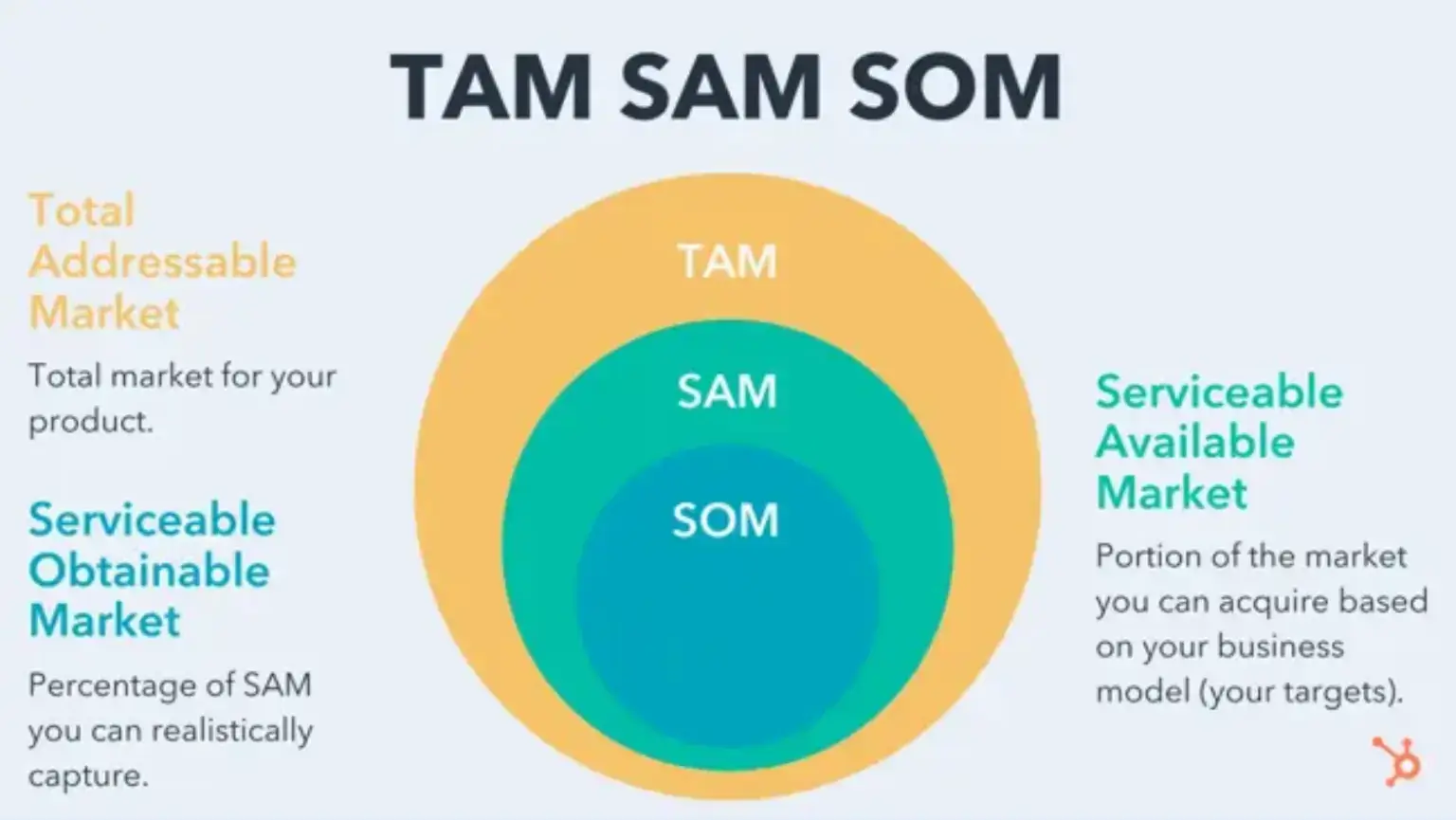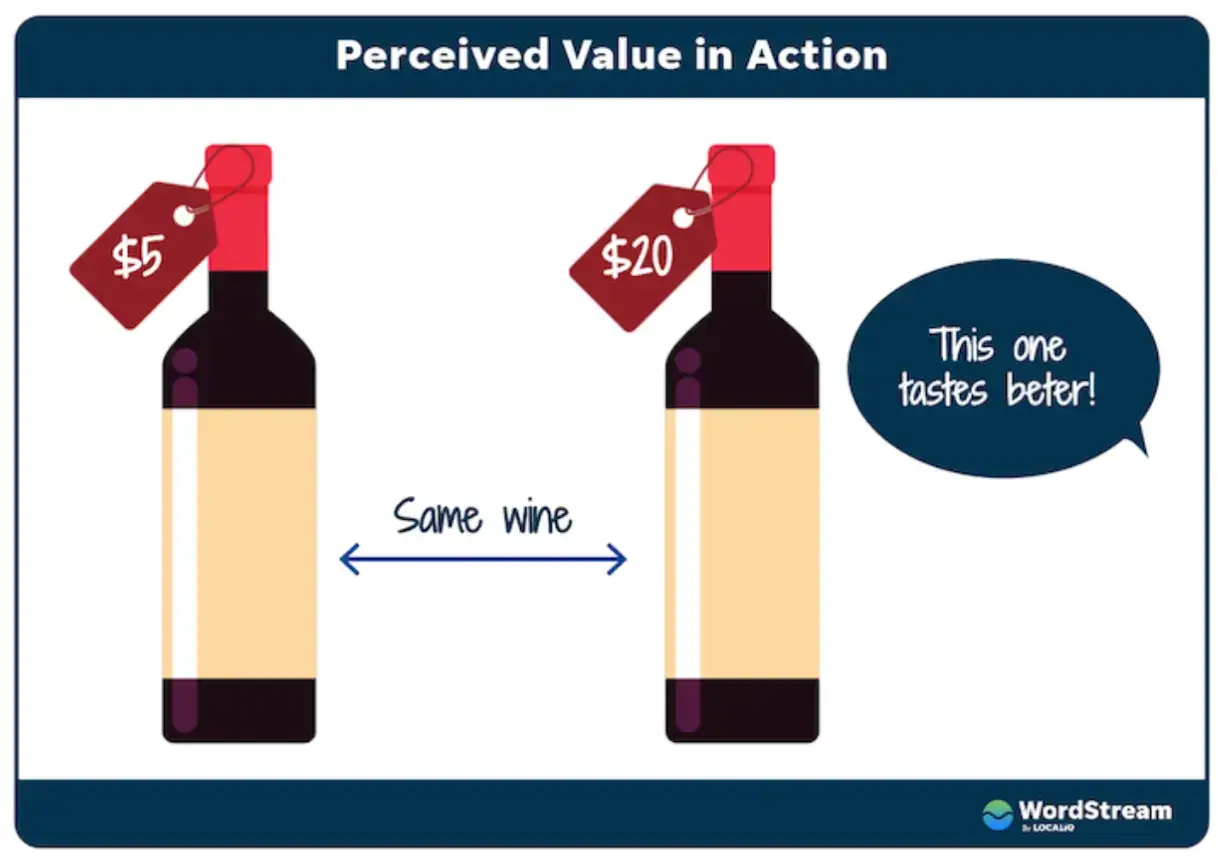Ready to dive into product development but not sure where to focus your efforts?
With lots of ideas buzzing around, it can be hard to prioritize your efforts and resources to find a product that’ll truly shine in the competitive landscape.
That’s where total addressable market (TAM) figures come in.
TAM helps you understand the potential revenue a product or service can bring you. This makes it easier to figure out which ideas to run with and which to put on the back burner.
Let’s explore what TAM is, why it’s important, and how you can calculate it as accurately as possible.
What’s Total Addressable Market (TAM)?
Total Addressable Market, or TAM, refers to the total revenue opportunity available if a product or service could reach 100% of its possible market share.

Source: Hubspot
In other words, if every potential customer in your market landscape bought from you, what’s the total figure you’d make?
It’s a strategic framework to understand market dynamics to better prioritize business opportunities and product development for a more efficient market strategy.
But remember, things change.
As dynamic markets evolve and technologies improve, so does your TAM. So, it’s important to regularly recalculate to make sure your strategies align with these changes.
Why Calculate TAM? - The Purpose (with Use Cases)
TAM gives you a clear picture of the potential scale of markets you might enter. It also helps you make informed decisions to plan your growth strategy by optimizing resource use and setting realistic revenue goals.
Here are some of the main reasons an accurate addressable market calculation is useful:
-
Attract investors
TAM shows investors the potential revenue your business can pull in. For example, a tech startup might use TAM to attract venture funding for a disruptive product that could increase its market share percentage.
-
Create market plans
TAM helps you devise go-to-market (GTM) strategies to match the size and characteristics of your target market. If you have a big market potential, you can spread your GTM budget.
But, if you’re working with smaller market subsets, you might have to prioritize your efforts. For instance, a fashion retailer might harness TAM calculations to tailor marketing efforts for different lines.
-
Guide product development
TAM makes it easier to direct your product roadmap.
Knowing which market has the largest potential makes it easier to focus on features, products, or services that will result in the biggest revenue opportunities.

Source: UNUSUAL
For example, an app developer working on financial services solutions could use TAM to figure out which user-requested features to work on first based on market demand.
Try QuickBooks to help you manage your business finances with ease.
-
Allocate resources efficiently
TAM helps you maximize your returns by informing you as to where to allocate resources.
Since you can work out which products will offer the largest potential revenue, you can prioritize where to focus your development and marketing resources.
So, say a small business has a limited marketing budget.
Rather than spreading it to promote their entire range of services, they’d use TAM to find out which products to focus resources on.
-
Analyze your competition
Since TAM tells you your total market potential, it can help you compare your current market share to the whole market. This helps you better understand what you’re up against and guides your market research.
If you know you have 5% of the market share currently, you can start to work out who holds the other 95%.
Understanding your position helps you figure out who you need the competitive edge against and how you’re going to get it.
-
Decide on niche market segments
TAM tells you the potential of a market opportunity so you can better understand whether it’s worth the effort. For example, a cat food manufacturer might consider entering the eco-friendly, vegan cat food niche, only to realize there isn’t much demand.
Total Addressable Market vs. Serviceable Obtainable Market - What’s the Difference?
TAM is the entire market demand for a product.
Serviceable Obtainable Market (SOM) refers to the specific part of TAM that a business can realistically reach and serve. For example, let’s say you offer a fitness app that’s available in the US, UK, and Germany.
You’d use TAM to calculate the total number of people across the world who might use fitness apps. However, SOM would focus on those in countries reachable through your current app platform.
Both are important for market planning.
But TAM facilitates big-picture thinking and long-term growth strategies, while SOM is better for setting realistic sales targets and short-term marketing and sales strategies.
How to Calculate TAM
While TAM calculations are useful, it’s important to remember that they’re only an estimate of your maximum market opportunity for a product or service.
Let’s explore three main approaches: The top-down approach, the bottom-up approach, and the value-theory method.
-
Top-Down Approach
The top-down method relies on analyzing broad market data and industry reports from credible sources like Gartner or Forrester.
Using this data as a benchmark, you can identify the specific segments that match your business’s goals and offerings. This approach offers a broad view of the market size and potential growth of market segments that relate to your business.
However, if you’re working with niche markets, this data may not be precise enough to reflect your actual potential. For a more detailed analysis, carry out your own custom research on your target market segments to supplement this data.
-
Bottom-Up Approach
The bottom-up method uses direct company data to work out TAM, such as previous sales figures and pricing information.
First, figure out your Annual Contract Value (ACV) by multiplying the average sales price by the number of current customers. Now, project this figure over your entire potential customer base to estimate TAM.
For example, let’s say you sell educational kits at $50 each to 200 schools right now. If there were a total of 5,000 schools that you could sell your products to, the TAM would be $250,000.
This approach is far more conservative as the estimate is grounded in your existing business performance.
-
Value-Theory Method
This method works out TAM based on the perceived value of your offering and what customers are prepared to pay for it.

Source: WordStream
This approach is best for products that offer clear advantages over competitors, as you’re able to set a higher price point.
You’d use this method for guiding market entry strategy and product development when you have a superior product to those that already exist on the market.
For example, imagine you sell organic protein bars.
While standard protein bars sell for $3 each, customers are willing to pay more for organic products. In this case, you might estimate that customers are willing to pay $5 a bar.
How to Use TAM to Grow
Calculating TAM is a super helpful way to get a clear idea of which markets to prioritize to maximize your product reach. Once you’ve identified those markets, it’s time to target them.
Improve your customer reach with POWR plug-ins and website apps that help you capture the right audience and direct them toward your products and services.
Author Bio
Mike Bandar is an award-winning UK-based entrepreneur. A Founding Partner of Turn Partners, the startup studio focused on the acquisition, turnaround, or creation of digital businesses. Through Turn Partners, Mike co-founded Hopper HQ the Instagram planning and scheduling tool, working with thousands of influencers, brands, and agencies around the world.



